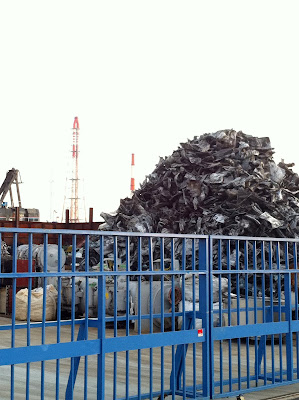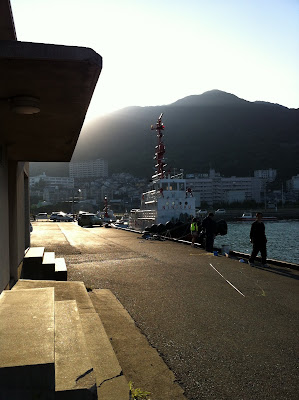
The Self Defence Force marching band was also getting about playing marching music on the move, and Japanese pop songs when they halted.
Even the very young take part in the drumming. They go at it until they flop.
A drama with drums and flutes is played out in the shrine inside the castle grounds.
Some groups depart from the castle pulling wheeled festival carts mounted with drums.
It's mostly girls and young ladies who wear yukata, but some stylish young men are seen wearing them too.
The drumming goes on constantly and can be heard everywhere.
Not all groups are the same. As soon as this group set up its drums and flags, a file of policemen appeared and surrounded them, gradually blocking them off from the audience. Presumably they are one of the 'antisocial elements', maybe be bosozoku or yakuza in training.
The drumming went on after dark. This crew was taking apart their wagon at 8pm before adjourning for drinks under a tree in the local park.

















































































